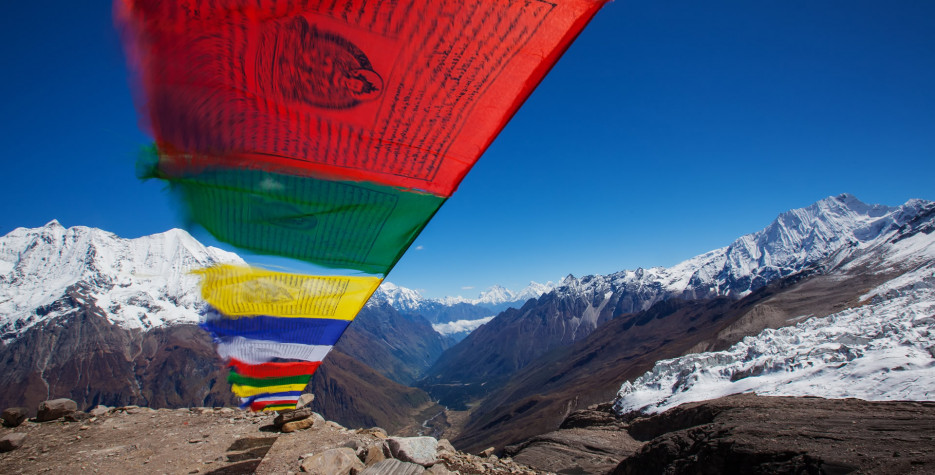Gyalpo Lhosar in Nepal
This holiday is known as Gyalpo Lhosar in Nepal and is often a public holiday. It may be celebrated on a different day in India and Nepal depending on how the lunar calendar is interpreted.
Gyalpo Lochar is celebrated grandly by organizing various programs from the new moon to the full moon. From the time of Ude Gungyal, the ninth king of Lhochar Bhote, Gyalpo began to be celebrated as the Spring Festival.
According to researcher Tika Sherpa, the name Galpo Lhosar was changed over time. According to him, Lhosar is pronounced as 'Galpo' by some and 'Galbo' by others.
Formerly celebrated in 12 districts of the Himalayan region, Gyalpo Lhosar is currently celebrated in 22 districts. With the migration of the Sherpa tribe, there has been an increase in the district celebrating this festival.
When is Losar?
Losar is Tibetan New Year and marks the start of the Tibetan year which is based on a 12 lunar month calendar. The day it falls on is very close to the date of Chinese New Year. The date each year is determined by astrologers based in Dharmsala, India.
The Tibetan calendar is in use throughout the Himalayan region and the New Year is a public holiday in Tibet, Nepal, and Bhutan. It is a regional holiday in the state of Sikkim in India.
History of Losar
Losar means New Year (lo - year, sar - new) in Tibetan. It is the most important festival in the Tibetan calendar.
The origins of Losar can be traced back to pre-Buddhist period and the Bon religion and was most likely celebrated to mark the winter solstice. To mark the beginning of the end of Winter, festivities included offering large quantities of incense to the local spirits and deities. When the region converted to Buddhism, the date was shifted by Buddhist monks to match up with their lunar calendar.
The Tibetan New Year period lasts for fifteen days, with the first three days and New Year's Eve being the main celebrations
On Tibetan New Year's Eve, a custom is making a special noodle dish called guthuk. In the dish are dumplings with different ingredients inside them. Finding a certain ingredient is a light-hearted omen for the coming year. Finding a white coloured ingredient such as rice or salt is considered a good omen; finding a pebble means good luck; finding a chilli means the person is talkative and finding a black ingredient means you have are 'black-heated'. Interestingly, in some European Christmas customs, finding coal in your presents means the same thing.
On Tibetan New Year's Eve, the monks do a protector deities' puja (ceremony) to drive out evil spirits. and begin preparations for the Losar celebrations.
On the first day of the new year, people rise early and place water and offerings on their household altars to ensure a good harvest.
Gyalpo Losar Traditions in Nepal
Losar celebrations typically last two weeks and revolve around food, family, and festivities. Preparations for Losar begins by making a special Sherpa snack – Khapse, a deep-fried pastry commonly eaten during the Losar, symbolizing the start of holiday celebrations.
Two days before the Losar, everyone in a Sherpa family gathers and enjoys a special soup called Gutung. Prepared with a combination of nine different kinds of beans, tradition states that each member in the family should have nine bowls of this soup. Gutung is also served with a special type of dumpling, which contains different hidden objects used in the place of fillings. The hidden items are often strange, such as wood, salt, or even coal, and are jokingly meant to relate to the character of the person they are chosen for.
The day before Losar, families gather to clean and decorate their homes. That same evening, once the clock strikes midnight, the traditional greeting, “Tashi Delek” is exchanged and friends and family stay up late to welcome each other to the new year. The following morning many Sherpa change the Dhoja, or prayer flags, in their homes, symbolizing a fresh start to the year. The day continues with a special beverage called Changkol made from Chaang (a Tibetan version of beer). People celebrate by singing or dancing to traditional Sherpa songs, eating, and drinking.
In the afternoon, people get together and continue the celebration. Many traditional ceremonial dances representing the struggle between demons and gods are performed at local Monasteries. Mantras are chanted and fire torches are passed among all the people in the crowd. Children often enjoy Losar the most as the environment is festive and full of delicious food, sweets, and gifts.


